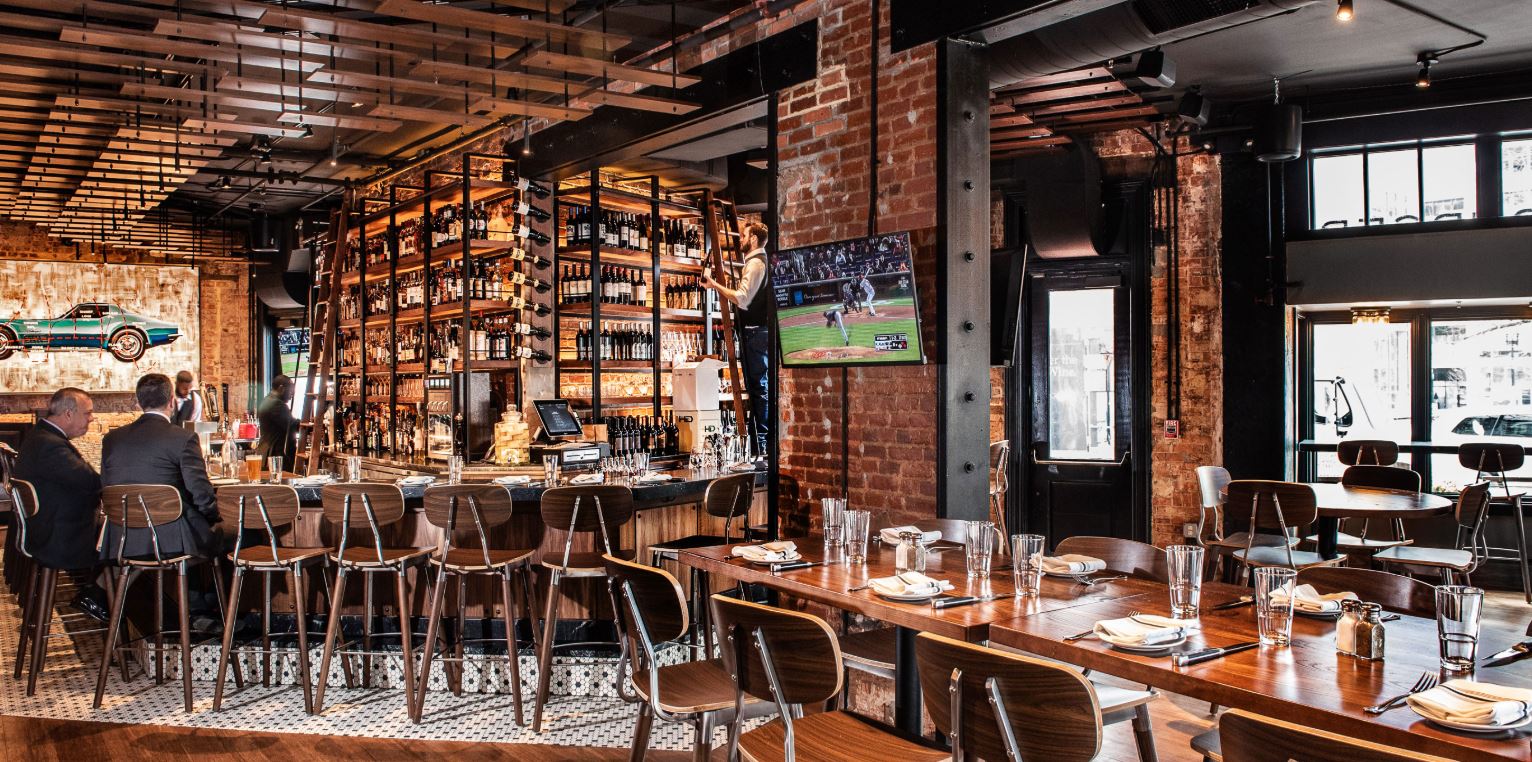Romantic Restaurants Islamabad: Suitable Dining Locations for Couples
Romantic Restaurants Islamabad: Suitable Dining Locations for Couples
Blog Article
Savor Genuine Oriental Food With a Pan-Asian Spin for a Culinary Experience
Embarking on a cooking trip with genuine Oriental cuisine, boosted with a Pan-Asian spin, offers a distinct opportunity to check out the rich tapestry of flavors that specify the area's diverse culinary practices. As you contemplate these luring meals, consider the social stories and historic impacts that form them, each bite offering a tale waiting to be uncovered. Chinese food Islamabad.

Exploring Pan-Asian Flavors
In the world of global gastronomy, Pan-Asian food attracts attention for its remarkable diversity and the unified interaction of flavors from various Oriental cultures. This culinary strategy celebrates the rich traditions and unique components found throughout the continent, developing a tapestry of preferences that is both rewarding and intriguing. Key to Pan-Asian cuisine is its capability to stabilize contrasting tastes-- pleasant, salty, spicy, and sour-- while highlighting the quality and top quality of each active ingredient.
From the umami-rich soy sauce of Japan to the fiery chili peppers of Thailand, Pan-Asian food offers an extensive combination of tastes. These aspects are frequently combined in innovative ways, boosting dishes with layers of intricacy. For example, using great smelling natural herbs such as lemongrass and cilantro, common in Vietnamese and Thai cuisine, includes a refreshing brightness to dishes, while the consolidation of coconut milk delivers a luscious, abundant structure.
The focus on fresh fruit and vegetables and fragrant flavors makes certain that each meal is not just a banquet for the taste buds however likewise for the senses. Pan-Asian cuisine invites restaurants to start a cooking journey, checking out the huge and varied landscapes of Asian gastronomy with every bite.
Combination Meals to Try
While Pan-Asian food is celebrated for its typical tastes, the modern culinary landscape is significantly embracing fusion recipes that blend these timeless elements with impacts from other areas. This ingenious strategy not just honors the abundant heritage of Eastern cookeries however additionally introduces unique preference experiences that interest modern tastes buds.
An archetype of such a fusion meal is the Korean-Mexican taco, where seasoned bulgogi beef is wrapped in a warm tortilla, topped with kimchi and a spicy gochujang-infused salsa. This combination marries the strong, tasty flavors of Korea with the dynamic, fresh elements of Mexican food. Likewise, sushi burritos have acquired popularity, integrating the fragile creativity of Japanese sushi with the passionate, hand-held convenience of a burrito, often including blend ingredients like tempura shrimp and avocado with a drizzle of wasabi mayo.
Another noteworthy meal is Thai curry ramen, which infuses the luscious, aromatic seasonings of Thai curry right into the reassuring broth of standard Japanese ramen, creating an unified blend that entices the detects. These fusion meals extend beyond simple uniqueness; they represent a culinary discussion in between societies, encouraging exploration and innovation on the planet of Pan-Asian food.
Vital Ingredients and Seasonings
To genuinely appreciate Pan-Asian cuisine, one should understand the crucial ingredients and flavors that form its foundation. This diverse culinary design attracts from a rich tapestry of Oriental practices, employing an unified mix of appearances and flavors. Secret ingredients consist of soy sauce, fish sauce, and oyster sauce, which present a mouthwatering umami deepness necessary to Asian dishes. Corresponding to these are rice vinegar and mirin, lending a delicate acidity and sweet taste.
Aromatic elements are essential, with lemongrass, garlic, and ginger being common throughout various Pan-Asian recipes. These ingredients provide a fragrant base that boosts see post the intricacy of flavors. Flavors such as celebrity anise, cardamom, and cinnamon present warmth and character, echoing impacts from regions like China and India.

Cooking Techniques and Tips
Mastering the art of Pan-Asian food needs knowledge with its distinctive cooking techniques, each adding to the lively tapestry of tastes this culinary tradition is commemorated for. Central to these techniques is the stir-fry, a fast food preparation strategy that protects the dietary honesty and brilliant colors of active ingredients. Making use of a wok, the stir-fry approach permits even heat circulation, vital for accomplishing the characteristic texture and flavor balance of Pan-Asian dishes.
An additional basic strategy is steaming, specifically common in Chinese food. This gentle technique keeps the all-natural tastes and nutrients of ingredients, making it excellent for seafood and vegetables. Dumplings, a cherished staple, commonly gain from steaming, causing soft, succulent structures.
Cooking, also important, gives great smoky depths to meals such as Oriental bulgogi or Japanese yakitori (Fine dining experience Islamabad). This strategy often involves marinating components, allowing tastes to pass through deeply prior to cooking over an open fire or hot plate
Finally, grasping the art of stabilizing tastes-- sweet, sour, salted, bitter, and umami-- is critical. Appropriately layering these components can boost a recipe from average to remarkable, supplying a complex and pleasing culinary experience that embodies the significance of Pan-Asian cuisine.
Dining Experiences Worldwide
Throughout the globe, Pan-Asian cuisine supplies an unequaled eating experience, celebrated for its abundant tapestry of flavors and vivid discussions. This culinary phenomenon has transcended social limits, capturing the hearts and tastes buds of food lovers worldwide. In multicultural cities fresh York, London, and Sydney, Pan-Asian restaurants serve as melting pots where culinary check here traditions from Thailand, Japan, China, and beyond merge, providing diners with an eclectic mix of dishes that highlight the region's diversity.
The worldwide charm of Pan-Asian cuisine depends on its ability to offer both credibility and innovation. Chefs skillfully wed standard components such as lemongrass, soy sauce, and miso with modern techniques, resulting in recipes that are both refreshingly new and familiar. This combination enables diners to start a cooking trip that appreciates heritage while accepting modernity.
Additionally, eating experiences are elevated with thoughtfully made settings that reflect the values of Pan-Asian appearances. From minimalist Japanese-inspired insides to vibrant Thai-themed spaces, each dining establishment provides an one-of-a-kind setting that matches the culinary offerings. Because of this, patrons are not simply taking in a dish however partaking in a cultural experience, making Pan-Asian eating a genuinely global phenomenon.
Conclusion
The expedition of Pan-Asian food offers an extensive understanding of the elaborate interaction of flavors and cooking practices throughout Asia. By welcoming combination recipes such as Thai curry ramen and sushi burritos, the cooking trip not only highlights the versatility of typical components however also showcases cutting-edge modern techniques. This gastronomic journey, enriched by cooking techniques and crucial flavors, offers a distinct chance to appreciate the cultural variety and culinary artistry that define Pan-Asian cuisine on a worldwide scale.
Embarking on a cooking trip via authentic Asian food, enhanced with a Pan-Asian twist, uses a special chance to explore the abundant tapestry of tastes that define the area's varied cooking practices.In the realm of international gastronomy, Pan-Asian food stands out for its remarkable diversity and the harmonious interplay of flavors from numerous Oriental cultures. Key to Pan-Asian cuisine is its capability to balance different flavors-- sweet, salty, spicy, and sour-- while highlighting the quality and top quality of each active ingredient.

Report this page